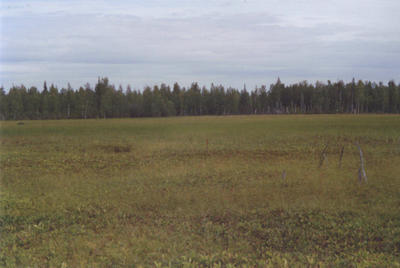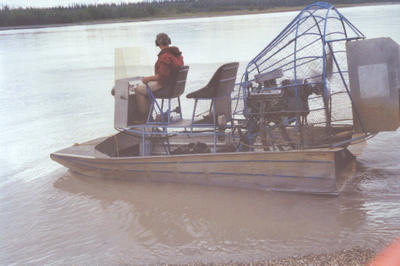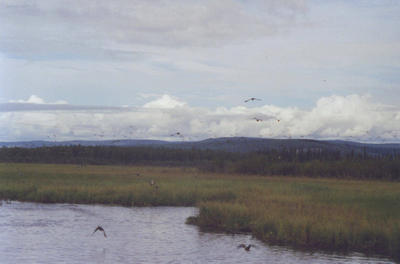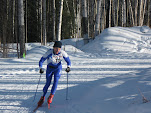Fens: Floating Communities in Peril

All wetlands are not created equal. Some happen to be more rare or productive, or biologically diverse. Fens are among wetlands known as "high function." However, in some areas, such as interior Alaska, fens are susceptible to damage from airboats and recreational activity.

Fens are unique and highly productive wetlands that include a floating mat of vegetation, usually one-and-a-half or two feet thick, underlain by another foot or two of nutrient-rich ground water. In Alaska's Tanana Flats, a vast 600,000 acre sub-arctic swamp of muck and mire, fens only comprise 4% of the total area, but support more than 60 species--much more than similar wetland types. Fens also provide habitat to a diverse array of wildilfe including ducks, geese, trumpeter swans, as well as song birds, including the rapidly declining rusty blackbird.

The management and conservation of fens has been controversial in Alaska. The use of airboats has increased since the 1980s. Early 1990s research suggested that the fens were resilient to up to 50 passes from airboats, but subsequent studies found these wetlands were not able to withstand continued use over several years. A 1998 study estimated that more than one-fifth of the fens on the Tanana Flats had been damaged. This rate of damage is probably not sustainable over the long term because airboats end up creating channels through the vegetative mat, and if the airboat users travel over the fens willy nilly, the vegetative maps would be sliced and diced like yesterday's salad.
An ongoing study, intiated in 2002-2003 has been monitoring the effect of airboat passage year after year. This study will help managers decide agencies to decide policies that would allow airboat use on marked channels, but not everywhere through the fens.



2 Comments:
Yup, recreational use with powered vehicles can make a mess of things if there isn't some sort of way to keep people on the same set of trails.
Nice article!
One of my favorite classes as an undergrad was Plant Ecology. Dr. Bazzaz, now a professor of biology at Harvard, and his grad assistants would take us on excellent field trips to study the varied ecosystems of the Midwest. Especially memorable was our visit to a peat bog in Michigan. There, Professor Bazzaz pointed out the microenvironments of the bog, and I saw pitcher plants growing out in the wild for the first time. The complexity of the bog really highlighted the fragile ecology of wetlands, and that we humans can easily make a deleterious impact on such, inadvertantly or otherwise.
Post a Comment
Subscribe to Post Comments [Atom]
<< Home